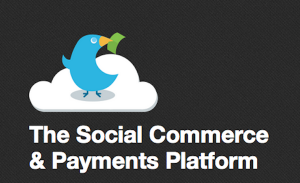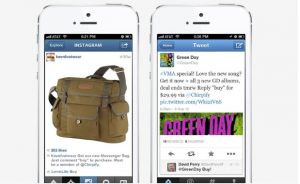Despite a great deal of hype, social commerce has struggled to prove itself so far. Will this Portland start-up help to change the game?
Back in 2010 Mark Zuckerberg said, “If I had to guess, social commerce is the next area to really blow up”. Some time later in February of 2011, Wired magazine lead with a cover story about social commerce, “Ecommerce is dead, long live social commerce,” it shouted from the newspaper stands.
But it didn’t really happen. Facebook and Twitter ramped up their monetisation – selling ad space and promoting posts and tweets, but was anything truly bought or sold on the platforms? The answer many argue is no.
It would appear however all of that is about to change and a start-up called Chirpify is one of the companies leading the social coup.
Founded in 2011 in the US, Chirpify started out offering people a chance to buy items advertised on Twitter or Instagram. Brands who have signed up to Chirpify, can see purchases made directly within the social platforms. It recently added Facebook to its social itinerary turning all three social platforms into potential cash registers.
The service doesn’t just offer purchases with brands, it also offers peer-to-peer payments. I could go only Twitter and send my buddy the £10 I owe them for dinner for example.
When it comes to buying something, social media users simply reply, “Buy” to any ad and they have made the transaction. If a brand is giving something away for free, users simply reply ‘gimme’ to request the freebie. It is also set up to allow donations to charitable organisations. If there’s a fundraising message on the social network, you can reply ‘donate’.
When users set up their Chirpify accounts, the enter their card details and they can start making transactions through the service on social media streams.
“It’s revolutionary because we enable businesses and consumers to buy and sell directly in-stream on social media with one comment,” founder Chris Teso told us.
“In fact, we’re the only company actually enabling social commerce. Every other application has actually been social advertising – sharing a link in an attempt to redirect a consumer’s attention, and browser, away from a social experience to a traditional e-commerce experience.
“If a consumer cant pay in-stream on the social network, it’s not social commerce, it’s advertising. This important distinction has ramifications for conversion percentages, user experience, and of course, data.”
So what are the ramifications for ecommerce professionals? It seems they can finally start looking at social media platforms as genuine sales vehicles and the real value of their social strategies will start to become apparent.
Retailers eager to get involved simply need to sign up to Chirpify, create product listings on Chirpify.com, publish these products on the Facebook, Twitter or Instagram and off they go.
Customers can purchase goods with one reply or comment. Sporting giants Adidas and Puma have already signed up as well as rock band Green Day, who sold three albums every 55 seconds when they signed up.
“Online retailers benefit because we eliminate the chasm that exists between a social media platform and an e-commerce platform,” says Teso.
“Since there is much less friction in the purchase process, conversions increase. We’re seeing effective rates of conversion double that of traditional e-commerce.”










Speak Your Mind